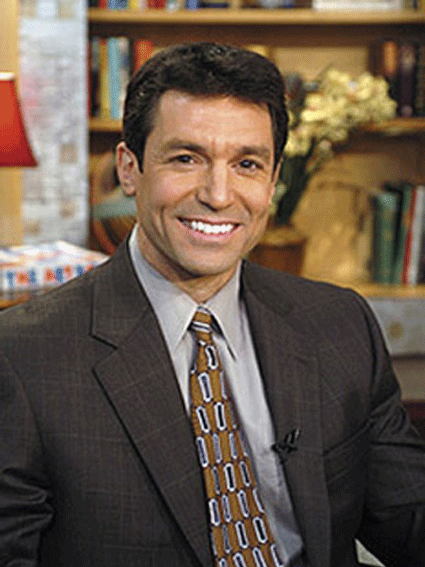
Diet and Health
Recess to Ritalin,
and Back Again

 |
By: Dr. David L. Katz* |
You likely know already that population levels of attention deficit/hyperactivity disorder in children are at all-time highs, and continue to rise.
Have you thought to ask why? After all, we are not manufacturing children any differently from generations past. From their genes on up, kids are fundamentally the same as they ever were.
So if more and more of them are subject to ADHD, it must be due to an environment that is the same as it never was before. An environment in which the native rambunctiousness of children doesn’t have recourse to recess.
Job one for me is containing, and then reversing trends in obesity, diabetes and related chronic disease in adults and children alike.
To advance that objective, I try to get traction and establish programs in every setting I can -- clinics, communities, work sites, supermarkets. But no setting matters more to me than schools. Maybe this is because I am a public health practitioner, and as such see the potential contribution to public health of a setting that offers access to almost all children. Or maybe it’s because I am a Dad, and am well versed in turning over the basic care and feeding of kids I love to others some 200 days a year.
For either reason, or both, I care passionately about the cultivation of physical health of children in schools, right alongside the cultivation of their intellectual development.
For years I have visited schools around the country and argued for the importance of physical activity (along with good nutrition). For years, school officials have said they agreed in principle, but in practice were obligated to prioritize the standards imposed by “No Child Left Behind.” Recess, and phys ed, became ballast to jettison in order to make more time for classes that prepared kids for standardized tests.
So we were stuck: Round peg, square hole -- the need for physical activity in childhood, and a school day that couldn’t find room for it.
A personal perspective on the issue: About four years ago, I gave a talk at Dartmouth College, and my then 5-year-old son, Gabriel, attended with my wife, Catherine, and my four daughters. Gabe wasn’t entirely interested in his dad’s speech, and couldn’t manage to sit still.
At some point, his fidgeting exceeded his mother’s tolerance. Seeing this play out from the corner of my eye, I decided to intervene.
“Excuse me folks,” I said, “my son is exploring new territory at the extremes of fidgeting, and tormenting my wife. I need to pause my talk and address it.”
We were in a large auditorium with stairs up either side, so I said: “Gabe, for cryin’ out loud -- get up. I want you to run up the stairs, out the door, along the corridor, down the other stairs ... then come back to your seat and sit still, and stop torturing your mother! I’m trying to give a talk here!”
Gabe gave me a look as if to say: “Do you mean it, Dad? Have you gone crazy?” And I said, Yes, I mean it! Get going. So he shrugged his shoulders and took off ... and I kept talking. Gabe came around at the end of his lap, sat down next to his mother -- then gave me an impish, “in your face, you asked for it, Dad!” kind of look -- and took off again. I shrugged my shoulders and kept talking.
When Gabe came around at the end of lap 2, he never bothered to sit down -- he just waved as he kept on going; and three kids got up and took off after him! When the four of them came around at the end of their lap, nobody sat down -- they all kept going -- and every kid in the audience under the age of 12 took off after them! We now had dozens of kids running laps around the auditorium, and my audience.
My audience, I’m sure, felt sorry for me -- thinking my talk had been disrupted. I felt sorry for them, thinking they were likely to get motion sickness watching kids run circles around them. I considered distributing scopolamine patches.
But then the significance of this energy burst dawned on me. So I said: “Ladies and gentlemen -- what’s going on here is more important than anything I have to say. My son is healthy -- I’m sure your kids are, too. He’s healthy -- but if you are cooped up with him for too long you will certainly need to medicate either him ... or yourself! That’s because he’s rambunctious. Healthy 5-year-old boys are rambunctious.”
“Rambunctious,” I continued, “should be treated with recess ... not Ritalin! We send our kids to schools that bolt them to chairs all day long, so they can grow into adults we can’t get off couches with crow bars. These kids just taught us something. Every now and then, they need to run around!”
And so, the ABC for Fitness (Activity Bursts in the Classroom; http://www.davidkatzmd.com/abcforfitness.aspx) program was born. With CK guidance from expert teachers -- in phys ed and in the classroom -- we devised a program of in-class activity that can be interspersed throughout the school day whenever kids get restless, bored, distracted or drowsy.
The program is designed to reconcile the square peg of phys ed and recess with the round hole of the school day. It can allow for 30 minutes or more of physical activity each day, yet not reduce teaching time by one minute. In fact, since teaching can take place during the activity bursts, teaching time can actually increase!
We hypothesized that the program could imrove not only fitness but could improve fitness, while reducing the frequency of behavioral disruptions in the classroom, and boost academic performance (the old “sound mind, sound body” adage). Based on an evaluation of an intervention involving 13 elementary schools in the Independence, Mo., school district, that all appears to be true.
And so does my rant that rambunctious kids can get from recess what they all-too-often get from Ritalin. Our preliminary data reveal a 33 percent reduction in the use of medication for ADHD in the kids who received ABC for Fitness in their schools. The data are preliminary, but very provocative.
It is my opinion that we went from recess to Ritalin. We now have preliminary findings to suggest we can, in fact, go back again. There is more work to be done to prove it, but in the interim, I certainly hope many schools will adopt the ABC for Fitness program -- which is available to all, for free. Gabe just ran by and says he hopes so, too.
* Dr. David L. Katz is an Adjunct Associate Professor of Public Health
and Director of the Prevention Research Center at the Yale University School of Medicine.
He is and Editorial Advisor to Prevention Magazine, Columnist for O, the Oprah Magazine,
and a Medical Consultant to ABC News. He may be reached at www.davidkatzmd.com.